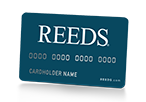If we were to place a lab grown and natural, mined diamond in front of you, you’d never know the difference. This is because both are visually and chemically the same. The only difference is that a lab grown diamond is grown in a lab at a much faster rate compared to the sometimes billions of years it can take a natural diamond to form in the earth.
Your Most Common Lab-Grown Diamond Questions
Our Jewelry Consultants Weigh In
Planning a proposal and picking a ring can be stressful, we know. But before you break out in full panic mode, we can help...because this should be fun and exciting.
Not to toot our own horn, but we’ve been trusted for 75 years when it comes to engagement ring advice and believe us, we’ve heard all the questions. In the spirit of helpfulness, our Diamond Concierge has compiled the most-asked questions for you to browse, learn, and get next-level comfy with some diamond and ring knowledge.
No question is too big, small, or silly—but if you can’t find your specific question (or you’re just super social and want to chat) get in touch directly with our Diamond Concierge, a GIA-certified expert who can deftly guide you through thousands of options to find your perfect one-and-only or even help you design a ring from scratch. And hey, they might have some proposal ideas while they’re at it! Consultations are free, so book yours here.
Not to toot our own horn, but we’ve been trusted for 75 years when it comes to engagement ring advice and believe us, we’ve heard all the questions. In the spirit of helpfulness, our Jewelry Consultants has compiled the most-asked questions for you to browse, learn, and get next-level comfy with some diamond and ring knowledge.
No question is too big, small, or silly—but if you can’t find your specific question (or you’re just super social and want to chat) get in touch directly with our Jewelry Consultants, a GIA-certified expert who can deftly guide you through thousands of options to find your perfect one-and-only or even help you design a ring from scratch. And hey, they might have some proposal ideas while they’re at it! Consultations are free, so book yours here.
Most-Asked Lab-Grown Diamond Questions
Most-Asked Lab-Grown Diamond Questions
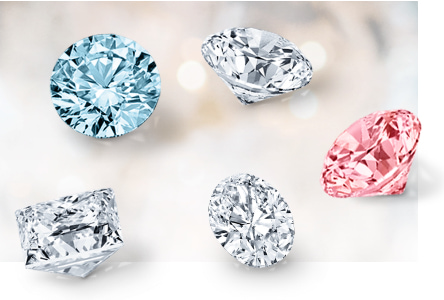

Good news on this front!
Because of the shortened time frame in producing them, lab grown diamonds are typically less than natural diamonds, which take thousands of lifetimes to form. Otherwise, the price of a lab grown diamond is based on the same factors, the 4Cs—cut, clarity, color, and carat.


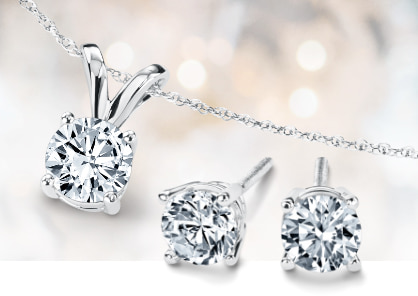

So glad you asked!
Because they’re grown in a lab and not mined from the earth, the environmental and ethical trade issues that can present themselves in natural diamond mining are not a factor.
Do you have all day?
We have a lot to say about this, but will try to keep it brief with the biggest benefits—lab grown diamonds are more affordable (meaning it’s more possible that big rock of your dreams can be a reality) and aside from the way they’re made, they look exactly the same as natural diamonds!
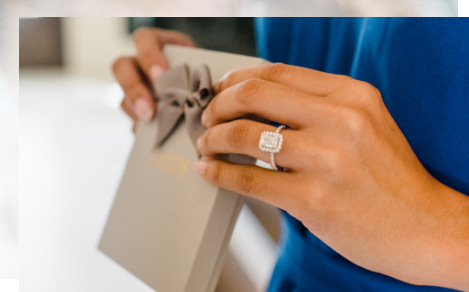

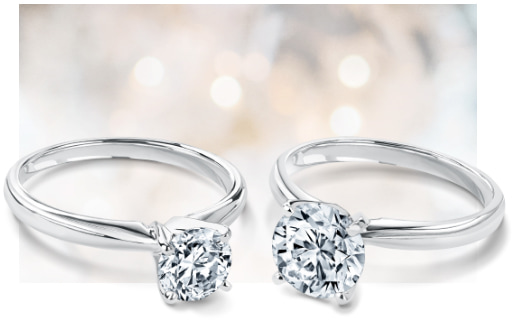

They can be.
They can be certified by any independent 3rd party laboratory.
Lab grown diamonds share the same physical, optical, and chemical properties as natural diamonds. To the naked eye they’re exactly the same *but* with a powerful diamond tester and specialized equipment they can be distinguished from a mined diamond.
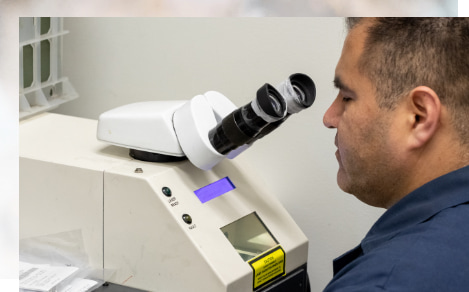

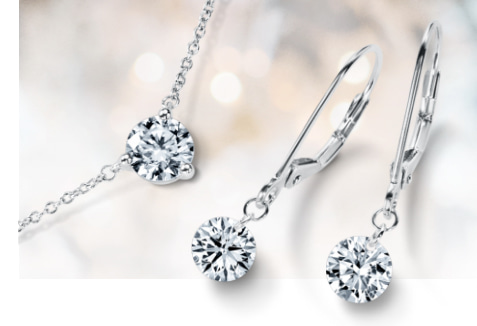

In HPHT, a thin sheet of lab grown diamond (adorably called a seed), is placed in a mechanical press. That press applies extreme heat and pressure to carbon. The carbon then bonds to the seed and—tada!— forms a diamond!
The CVD process starts with a seed as well. There’s then carbon-rich gas that’s put into a chamber while heat is applied at a low pressure. As the heat rises, the carbon atoms bond to the seed. And there you go—another brilliant lab grown diamond is born.
All gemstone prices fluctuate over time depending on the demand in the market and lab grown diamonds are no exception.
Since gem-quality lab grown diamonds are a relatively new product, the future value of the diamonds remains uncertain. If you’re concerned about this and you buy a diamond from a reputable jeweler like REEDS, you might want to ask about their trade-in policy for lab grown diamonds.
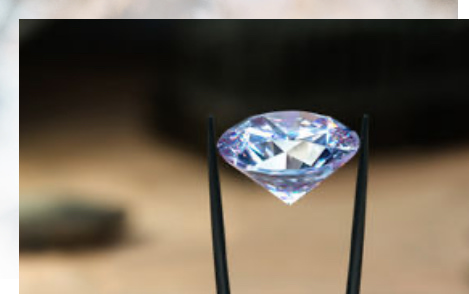

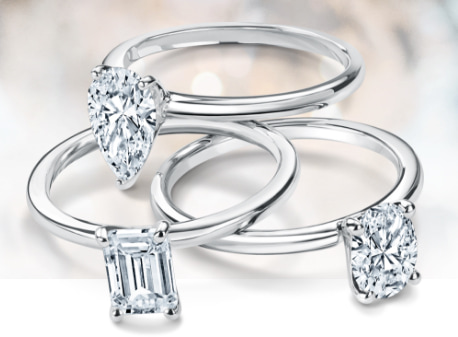

Both lab grown and natural diamonds have an effect on the environment—and both are consistently working to improve practices and become more environmentally friendly.
The ultimate goal in both productions is to leave the environment in the same state, if not better, than when they started. Many growing facilities are currently working on using renewable energy and alternate energy sources to power their machines.
There you have it—engagement ring and lab grown diamond 101 complete. Still have questions or want some help navigating the huge oceans of rings out there? Don’t forget to set up a complimentary consultation and help sesh with our Jewelry Consultants here. Or just visit your local REEDS to explore in person and get instant expert advice.
(Find your local store here!)
Yes, depending on the style.
They can be, depending on the watch. Some brands are a better investment than others—now-vintage styles from Rolex, Cartier, and Omega can command impressive prices and see their value soar quickly in a short period of time. “Wrist shots” on social media are driving demand and popularity for collecting vintage watches, as are celebrities (a Paul Newman-model Rolex Daytona from the 1960s showed up on Ellen DeGeneres’ wrist on one television show, estimated value is whooping at around $250,000).
While vintage and pre-owned styles might be the rage right now, the new watches being produced today are tomorrow’s collectors’ items—so holding onto them for a long time is likely to increase your initial investment, if you choose the right brand and style. While the patina of watches from the 60s adds to their cool factor, today’s watches are made with astoundingly better materials (think indestructible ceramics versus the scratch-prone acrylic of yesteryear). So chances are your modern watch will (quite literally) stand up to the test of time.
There are three different types of movements that make a watch work—quartz, mechanical, and automatic. A quartz watch is battery operated, which makes the second hand move in individual ticks (interestingly, solar-powered watches like the Citizen Eco-Drive are considered quartz).
In contrast (and in lieu of a battery), a mechanical watch is manually wound and has a smooth second hand motion. The benefit here is that you never run out of energy (considering you wind it regularly) and there are no batteries to be disposed of for the environment’s sake. Mechanical watches can be traditional-looking and rugged (check out the Hamilton Khaki Field collection) or completely modern—Tissot’s mechanical T-Complication Squelette model shows off a skeleton dial, which allows you to see through to the inner workings of the watch.
An automatic watch uses the energy from the movement of the watch wearer’s wrist to automatically drive the mechanisms within the timepiece. With automatic function, the key benefit is longevity—so long as you wear it regularly so it has the ability to borrow your energy. This type of watch is offered by a range of brands, from Breitling and Bulova to TAG Heuer and Accutron.
We can trace the modern watch back to the workshop of a locksmith and clockmaker in 16th century Switzerland—Peter Henlein is credited with crafting the first watch there. And so an industry was born, and one particularly associated with luxury, precision, heritage and the epitome of detail. Today, a watch crafted in Switzerland can be called a Swiss watch and is held to an exceptional standard of quality, design, and craftsmanship. Luxury Swiss watch brands are now almost synonymous with cutting-edge technology and materials.





It depends on the extent of damage or what the issue is—many parts can be replaced and other issues fixed by our watch repair specialist. But if your watch was run over by a car, you may be out of luck. Check out REEDS Watch Care Plans, which cover many types of repairs and give you peace of mind every time you strap on your investment.
There are a number of reasons depending on the watch in question, but they usually fall into a couple of categories. At the top of the list is brand association and exclusivity—many watchmakers intentionally make limited production runs, which drives up demand and value.
But there are also quality details that affect the price—innovative technology takes time to research and develop, and some watches are meticulously (meaning slowly and painstakingly) crafted or finished by hand rather than on a machine’s assembly line.
And of course, there’s the material question. If your timepiece is encrusted in diamonds and gleaming in gold, obviously there’s going to be a higher price tag—and also a better chance of holding value into the future.
When you consider that watches function as more than just practical timepieces (they’re style statements and pieces of nostalgia, too) we don’t believe watches are going anywhere anytime soon. In fact, like we mentioned earlier, social media is creating even more interest and newbie watch collectors. There’s also the sentimental component of timepieces being passed down from generation to generation.
This isn’t a hard and fast rule and is really best determined by personal preference. Since most people are right handed and use that as their dominant hand, wearing the watch on the left wrist made more sense comfort-wise and also helped limit the risk of damage to the watch.
Waterproof is a misnomer—the industry prefers the term water resistant, because ‘waterproof’ implies a level of warranty that watches cannot obtain. These guidelines are issued by the Federal Trade Commission of the U.S. There are different levels of water resistance, ranging from basic humidity or drizzle protection all the way to 200m or 300m, making it suitable for scuba diving. Water can damage watches with lower resistance ratings, so it’s an important factor to consider and investigate based on your lifestyle and activities as you’re watch shopping.
A quality watch should last a lifetime, and with a little care and regular maintenance, it’s easy to achieve. First, make sure you’re avoiding water (based on your watch’s recommended resistance level) and any chemical exposure. Keep it clean by gently polishing and if it’s mechanical, make sure you’re winding it regularly. REEDS offers a Watch Care Plan that offers two years of repairs and service to keep your watch ticking like new—including repairs from bezel to band and clasp to crown. Find out more details here.

